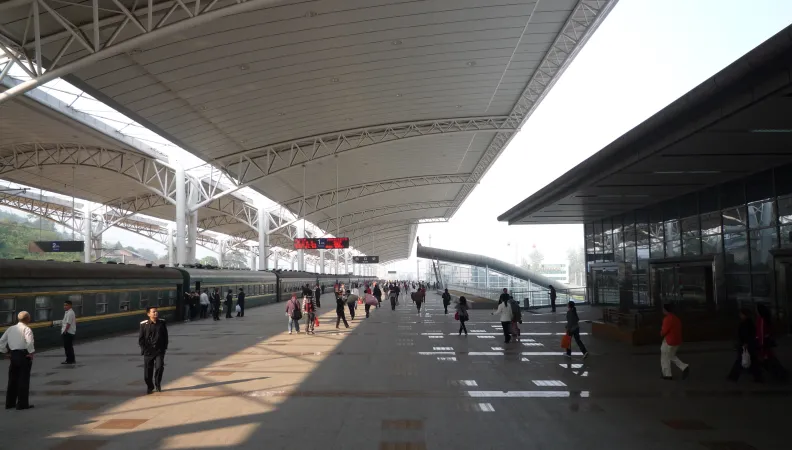Share the page
Improving the energy efficiency of rail transport in China
Project


-
Project start date
-
Status
Completed
-
Project duration
-
15 years
-
AFD financing amount
-
€ 80000000
-
Country and region
-
Location
-
Luoyang, Zhangjiajie
-
Type of financing
-
Beneficiaries
-
Local authorities of Henan, Hubei and Hunan
The electrification of the railway line between Luoyang (Henan province) and Zhangjiajie (Hunan province) aimed to improve the energy efficiency of rail transport in China.
Context
In the early 2000s, transport experienced strong growth–8.5% between 2000 and 2007–and represented 10% of energy consumption. Rail accounted for one third of passenger volume (measured in passenger-kilometers), compared to 53% for road and 13% for air transport.
Yet rail transport is five to ten times more efficient than the other two modes of transport in terms of energy consumption per unit carried (and roughly the same ratio for CO2 emissions per unit carried). It was therefore crucial to promote rail transport in order to prevent the development of energy and carbon-intensive transport.
Description
The project supported by AFD enabled the electrification of 925 kilometers of a double-track line through the provinces of Henan, Hubei and Hunan, thereby extending the existing electrified network.
It involved major civil works for stations and engineering structures. The project also included the procurement of electrification infrastructure (including sub- stations, posts and catenaries) and rolling stock, and the adaptation of maintenance facilities.
Impacts
-
For the service levels included in the project, electric traction enables energy savings of 40% compared to diesel traction.
-
CO2 emissions are reduced by an estimated 11 million tons over twenty-five years and soot and SO2 emissions are avoided.
-
The project helped meet growing long-term demand for transport and reduced travel times for users (passengers and goods).
-
Railway operation and administration costs were reduced.
-
Freight service quality improved (thanks in part to reduced loading times).


